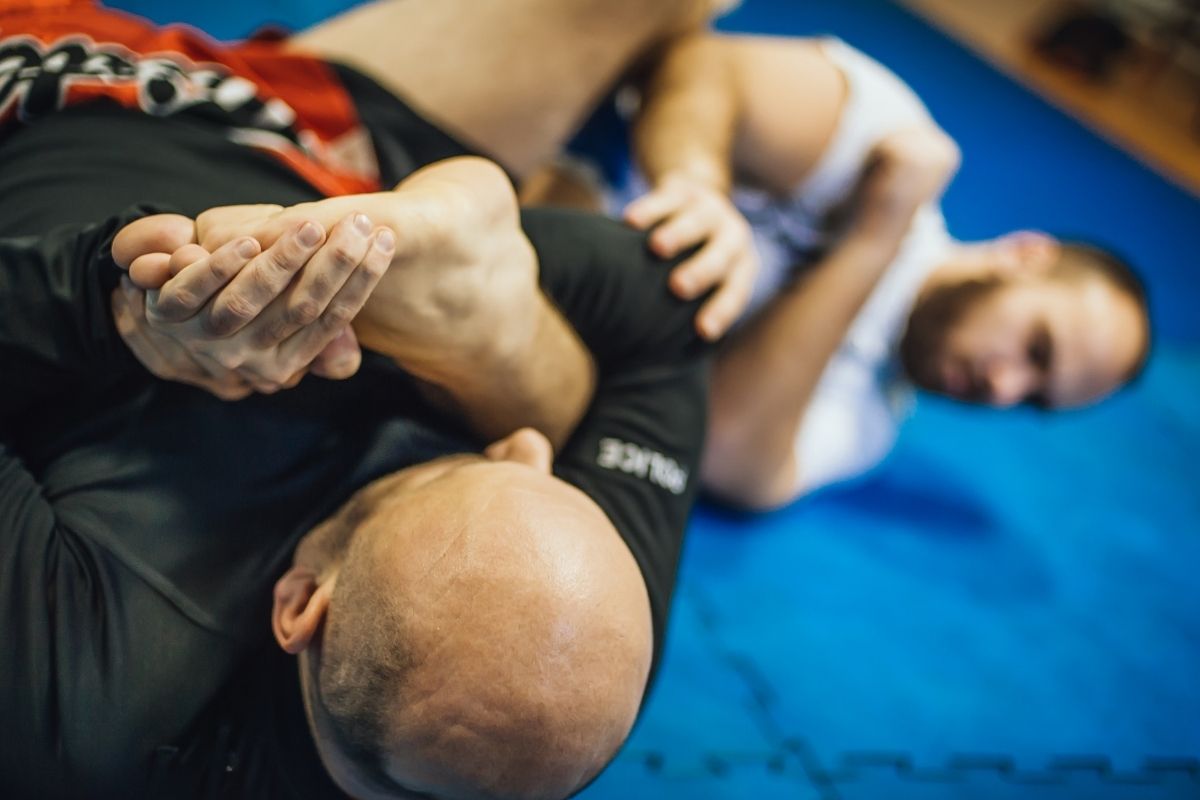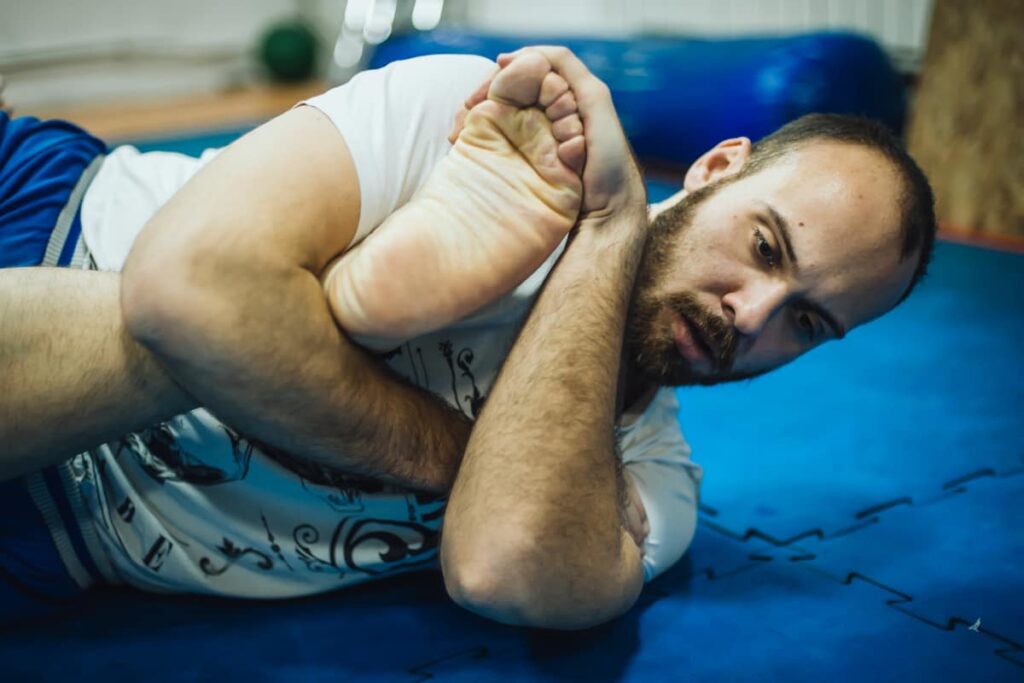In order to force an opponent to tap out or quit, practitioners of Brazilian Jiu-Jitsu use the heel hook, which is a grappling submission technique.
Some famous Brazilian Jiu-Jitsu heel hook specialists include Gordon Ryan, Rousimar Palhares, Vinny Magalhaes, Keenan Cornelius, Dave Terrell, Eddie Cummings, Garry Tonon, Tom de Blass, Ryan Hall, Jeff Glover, Dean Lister, and Joao Assis.
History
One of the oldest activities known to men is grappling. Through the artwork of Ancient Greece, we can observe some of the earliest forms of grappling where the heel hook was used. Roman Culture accepted a wide range of aspects of social life in Greece, so the famous Pankration and the technical advances were then transported to Rome.
However, there are so many different drawings in Ancient Egypt that showcase knee-bars and other leg attacks. When it comes to the heel hook technique in Brazilian Jiu-Jitsu, there are a few myths that surround it.
One myth is that Ivan Gomes, a famous 60’s grappler, is the creator of the heel hook. Even though Gomes was the first grappler to bring attention to the heel hook submission in Brazil.
Actually, the person who disseminated Brazilian Jiu-Jitsu in Brazil in the first half of the 20th century was Takeo Yano. He competed and taught in Brazil for many years, and left behind many students who continued their lives leading successful schools for Brazilian Jiu-Jitsu.
In the 70’s, Brazilian Jiu-Jitsu started taking shape as a sport! For the rules of Brazilian Jiu-Jitsu to be outlined, the first federation of the top instructors gathered in Rio de Janeiro. This was the moment when they outlined the restriction book and set the first point system for Brazilian Jiu-Jitsu.
It was during this time that they banned positions such as the spinal locks, the kneebar, and the hell hook. These positions weren’t allowed even in training, since practicing them would be regarded as lacking in technique.
The heel hook envelope was pushed further during the 90’s, when foreign competitors were allowed in Brazilian Jiu-Jitsu, especially in its no-gi format through promotions such as the Grapplers Quest, NAGA, ADCC, and other international tournaments.

How Does a Heel Hook Work?
The heel hook works by taking the leg of the opponent and forcing it into an angle. By doing this, it creates a level. You don’t need to put pressure on the heel of the opponent for a heel hook. Instead, it’s the knee of the opponent that absorbs the pressure of the leglock.
Next, the opponent will have a few milliseconds to damage or tap your knee once you lock in the submission. We recommend that when you train heel hooks with your partners you should be very careful.
You need to control the leg of the opponent before you even think about getting the heel hook. You have no chance of gaining submission if you don’t establish control of their leg. You can control the leg of your opponent using several different methods.
Besides controlling your opponent’s leg above the knee, you should also keep your hips aligned with your opponent. To be able to get the heel hook, you need to get their leg to be bent at an angle. Once you’ve gotten control over the leg of your opponent, it’s time to go for their heel.
Turn your body toward the heel of your opponent and hook it using your forearm’s blade, that way it won’t slip out and it’s tight. Turn towards your back shoulder and apply pressure once you secure their heel.
Inside Heel Hook
The inside heel hook is more vicious and dangerous than a basic heel hook, since it can tear a knee in less than a second. The main difference between a basic heel hook and an inside heel hook is that you attack the inside of the heel of your opponent.
Another difference is that you have your inside heel tucked in their heel, while with a basic heel hook this is done on the outside hip. The saddle position is one of the easiest and common leg controls to get inside a heel hook.
Once you’ve already gotten control of the leg, you use the same concept to get the heel as you would with a basic heel hook. To control it, you turn your body into a hook with the blade of your wrist. They should tap pretty quickly once you turn slowly towards your other shoulder.
There are also other types of heel hooks you should explore if you want to know more, such as the simple heel hook setup from half guard, Craig Jones heel hook setup, backstep to heel hook, half guard to ashi-garami heel hook, and so on!
Final Thoughts
Remember that your technique needs to be perfect when you go for a heel hook. You won’t be able to get your submission if there are any flaws in your technique. Keep in mind the steps and tips we’ve pointed out in this guide when you’re executing your heel hook Brazilian Jiu-Jitsu!
For more information, please feel free to keep exploring our site!

